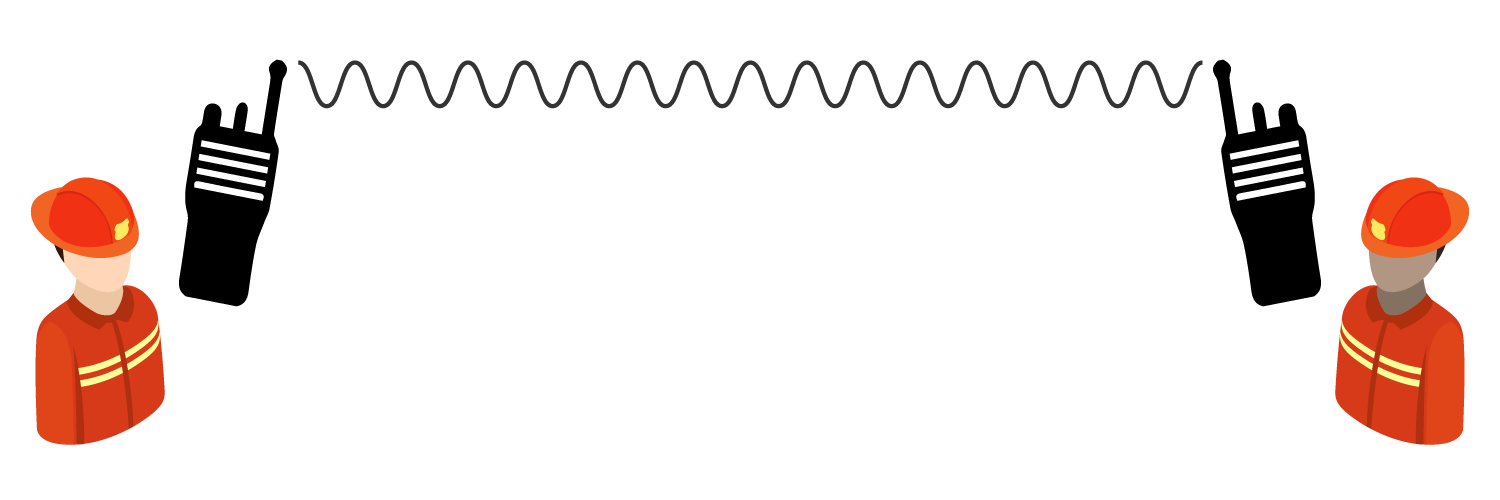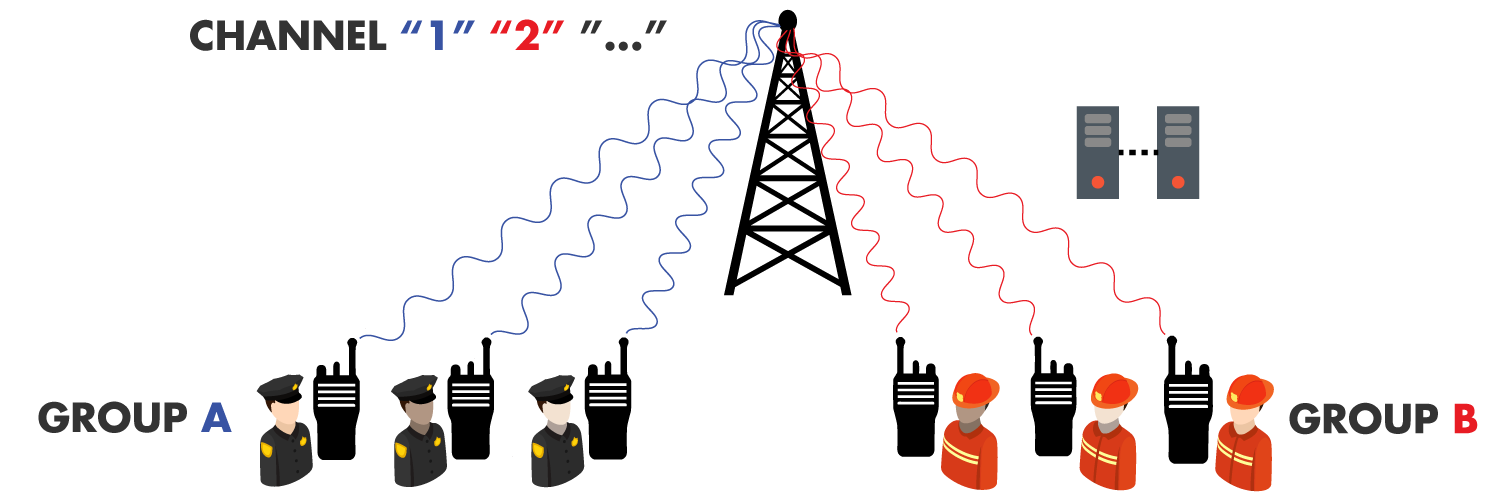Intro to Two-Way Radio
BDA Fundamentals
Codes & Regulations
Sales
Product Information
Design Process
Installation and Deployment
Service & Maintenance
Types of Radio Systems
You are here: Main > Intro to Two-Way Radio > Types of Radio Systems
Direct Mode (Simplex)
Simple radio-to-radio communication, most reliable for short distances. The main disadvantage is very limited range, does not work well in larger buildings.

Repeated
Radio transmissions in a repeated system are rebroadcast with higher power by a repeater. Repeater receives the portable radio transmissions and rebroadcasts them with higher power. This results in improved radio range over a wide area. Repeaters can be conventional or trunked.

Repeated (Conventional)
Each conventional repeater rebroadcasts on one channel. In a conventional system, repeater channels are selected by the users. For example, Channel 1 could be Police and Channel 2 the Fire Department.
Conventional repeaters do not transmit any signals unless there is on-channel voice traffic. In-building signal surveys are done by either monitoring the voice traffic or by briefly activating the repeater with a quick press of a PTT (push-to-talk) button on the portable radio.

Repeated (Trunking)
Trunking systems are more complex but they allow dynamic sharing of repeaters among multiple groups of users, thus increasing system capacity by creating "virtual channels." Trunking repeater systems automatically and dynamically assign unused, free channels to the radio system users.
Typically, one channel is designated as the "control channel". The control channel continuously transmits low speed data. This signal can be used as a reference for in-building radio signal strength surveys, and there is no need to activate the repeater with PTT.
